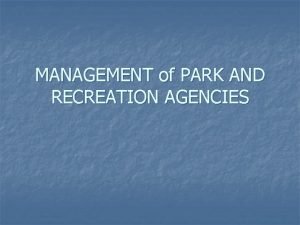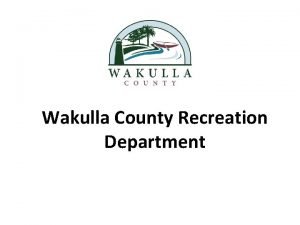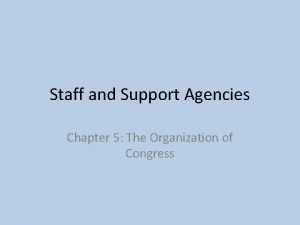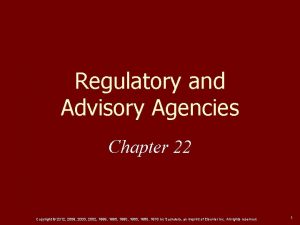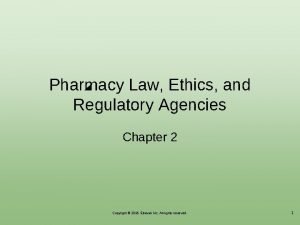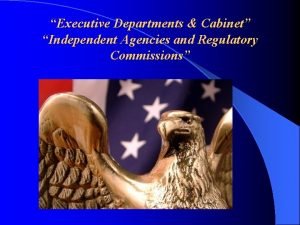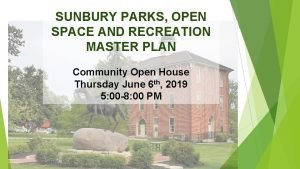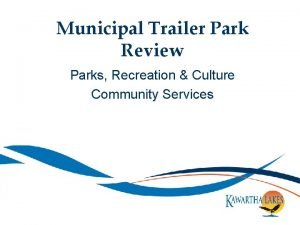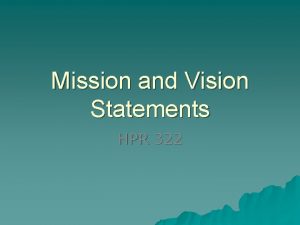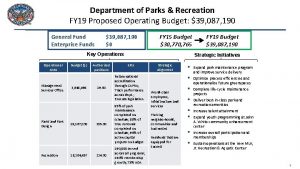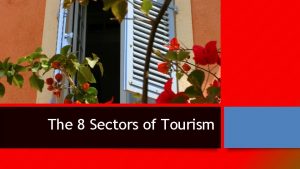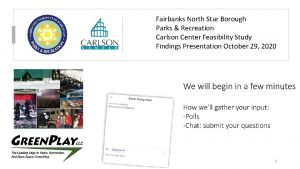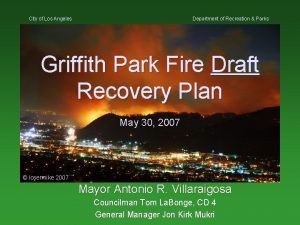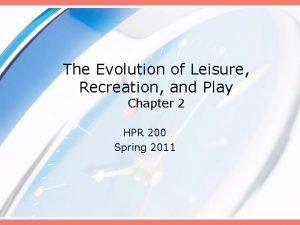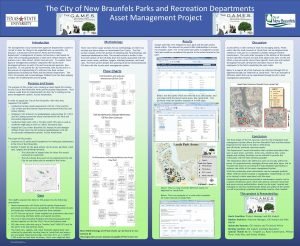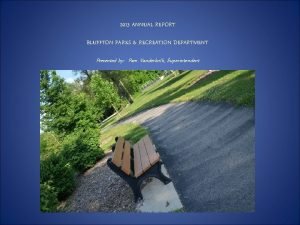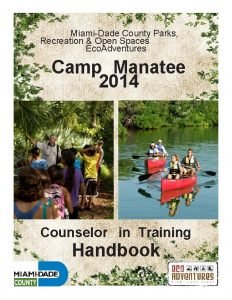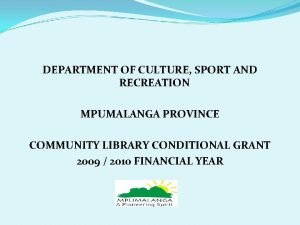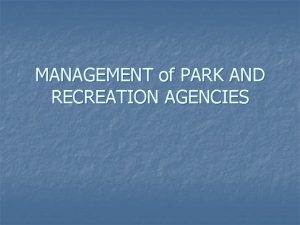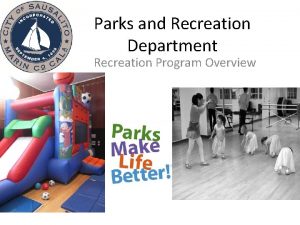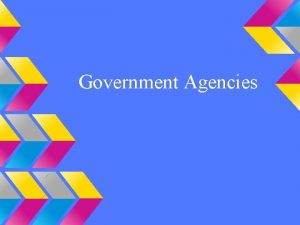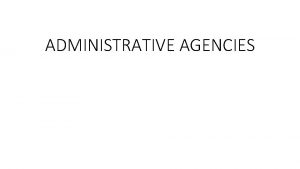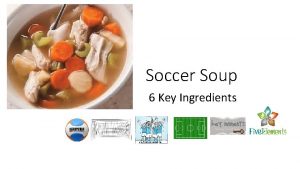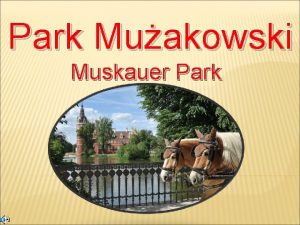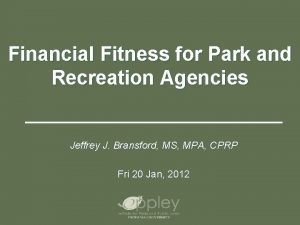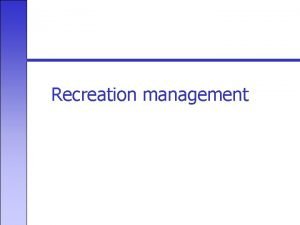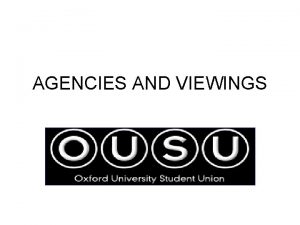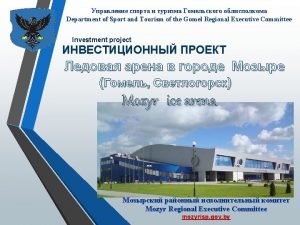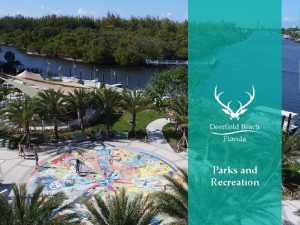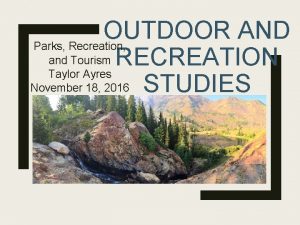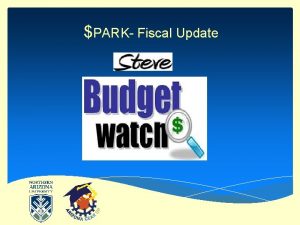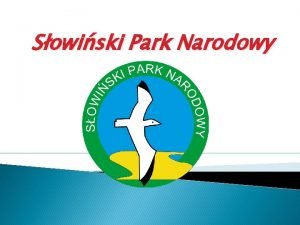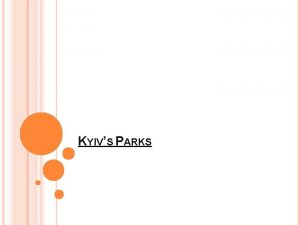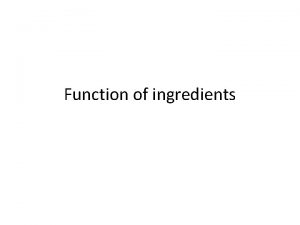MANAGEMENT of PARK AND RECREATION AGENCIES Key Ingredients


























- Slides: 26

MANAGEMENT of PARK AND RECREATION AGENCIES

Key Ingredients for Successful Management n n n Innovation Interpersonal Skills Willingness to Adapt management style

Successful Managers are: n Well integrated social n communicative n well rounded n n Practical and Organized possess common sense n have a plan n are prepared n

Role of Managers n Leader n n Communicator n n Cares for and develops employees Change Agent n n Uses all forms well Coach/Mentor n n Tranforms others by example to reach goals Has sound strategy for change – is flexible/promotes flexibility Power Broker n Power to broker deals, power to exercise needed authority

5 Core qualities of managers n Ethics and Values n n Groups and Group Processes n n Need to be able to articulate the level of service quality Alliances and Partnerships n n Able to gain consensus via group decision making Service Matters n n Follows a model code of ethics Widens spectrum and increases allies Positive and Productive Work Climate n Several approaches (power/trust/etc. ) find one that works

Specific Managerial Competencies n n n Understand Recreation Behavior Understand $$$$$ Recognize effective ways to deal with people Strategic planner of resources Deliverer of quality programs

CEO competencies (version 2) n Business skills n n Communications and Marketing Skills n n Visionary Political acumen n n Leader, Decision Maker, resolver of conflicts Planning and Evaluation n n Accountable to public Leadership and Management n n Effective public speaker – can work with media Community Relations n n Financial, technology, human resources Understand law and legislative process – play the political game Professional Practice n Technically proficient

Managerial Competencies according to CAPRA Accreditation Standards

Is Management a Science or Art ? ?

ART n n n requires judgment sensitivity intuition imagination dealing with irrational elements “does it feel right”

SCIENCE n based on theories developed over decades social psychology n economics n business administration n n holds that whenever possible, management decisions should be based on principles verified through research

SCIENCE (continued) n Decisions tend to be rational n objective n analytical n systems oriented n

Time Line of Management Theory

SCIENTIFIC MANAGEMENT 1890 -1935 n Frederick Taylor’s Machine Model involved time and motion studies n focus on productivity n n n the one best way to complete the task piecemeal

CLASSICAL MANAGEMENT THEORY 1930 -1955 n n also called the Human Relations Movement. More concerned about the individual Tenets of Hierarchy scalar principle (unbroken chain of command) n unity of command (one superior) n span of control (limited # of subordinates) n

Hierarchy illustrated in organizational charts n An organizational chart is a chart which represents the structure of an organization in terms of rank. The chart usually shows the managers and key players who make up an organization. The chart also shows relationships between staff in the organization which can be: n n Line - direct relationship between superior and subordinate. Lateral - relationship between different departments on the same hierarchical level. Staff - relationship between a managerial assistant and other areas. The assistant will be able to offer advice to a line manager. However, they have no authority over the line manager actions. Functional - relationships between specialist positions and other areas. The specialist will normally have authority to insist that a line manager implements any of their instructions

Hawthorne Studies (E. Mayo) n improvements in morale were due to improved social conditions

Henri Fayol, 1930 n n Known as the father of Classical Management ELEMENTS: Planning, n Organizing, n Coordinating, n Controlling n

Max Weber n Bureaucratic Model a rational structure for large organizations n gives necessary order, but virtually all decisions are made at the top n many decisions are political rather than technical n

Parks and Recreation and Classical Theory n Luther Gulick applied classical theory to parks and recreation n particularly Fayol’s approach, expanded to POSDCORB n still a popular approach today n helps to understand manager’s responsibilities: n n planning, organizing, supervising, directing, controlling, operating, research and budgeting

BEHAVIORISM 19551980’s n n Organizational theorists applied Maslow’s needs to the workplace Herzberg n Motivation - Hygiene Theory job enrichment needed for motivation n happiness due to job content n n Mc. Gregor n Theory X and Y n workers will respond as treated (need control)

MANAGEMENT BY OBJECTIVES n n Proactive, results oriented style Effective only if employees trust management n MBO illustrates the 2 directions modern management is heading. . focusing in part on a systems (objectives) approach and simultaneously on an employee participation (setting their own goals) tack.

PARTICIPATIVE/TEAM MANAGEMENT n n Theory Z, a hybrid based on Japanese Management Style TQM total quality management n n n initially derived from Z but greatly expanded One minute manager Benchmarking (from in Search of Excellence) n MBWA Management by Walking Around

Buzzwords of Today n n n n n TEAMS PARTICIPATORY MANAGEMENT EMPOWERMENT INTREPRENEURISM RIGHTSIZING PRODUCTS WITHOUT COMPANIES VALUE ADDED OUTCOME BASED MANAGEMENT RESOURCE BASED VIEW n n Core competencies Tangible and intangible resources

Agency Resources n Tangible n n n Labor Capital Equipment Time Information In-Tangible n n Goodwill Reputation n Also labor/people

Issues n n n Doing more/less with less ? ? Increase revenue generation Improve accountability n n n efficiency of operations Measurable outcomes/benefits Address duality of mission (social service vs. pay as you go private service) Changing Demand Transfer to the private sector
 Management of park and recreation agencies
Management of park and recreation agencies Wakulla county recreation department
Wakulla county recreation department Brush mountain park orchard park
Brush mountain park orchard park Family and morale welfare and recreation
Family and morale welfare and recreation Key partner business model canvas
Key partner business model canvas Business model canvas tripadvisor
Business model canvas tripadvisor Lesson 5 staff and support agencies
Lesson 5 staff and support agencies Chapter 22 regulatory and advisory agencies
Chapter 22 regulatory and advisory agencies Pharmacy law ethics and regulatory agencies
Pharmacy law ethics and regulatory agencies International child welfare organization
International child welfare organization Voluntary health agencies
Voluntary health agencies The structure of congress lesson quiz 5-2
The structure of congress lesson quiz 5-2 Cabinet departments and independent agencies are created by
Cabinet departments and independent agencies are created by Sunbury parks
Sunbury parks Parks and recreation trailer
Parks and recreation trailer Parks and recreation vision statement examples
Parks and recreation vision statement examples Elizabethan recreation and sports
Elizabethan recreation and sports Parks and recreation organizational chart
Parks and recreation organizational chart Eight sectors of the tourism industry
Eight sectors of the tourism industry Carlson center fairbanks events
Carlson center fairbanks events City of los angeles department of recreation and parks
City of los angeles department of recreation and parks Evolution of leisure
Evolution of leisure New braunfels parks and recreation
New braunfels parks and recreation Bluffton parks and recreation
Bluffton parks and recreation Department of sport and recreation wa
Department of sport and recreation wa Miami-dade county parks and recreation staff
Miami-dade county parks and recreation staff Mpumalanga department of culture sport and recreation
Mpumalanga department of culture sport and recreation
